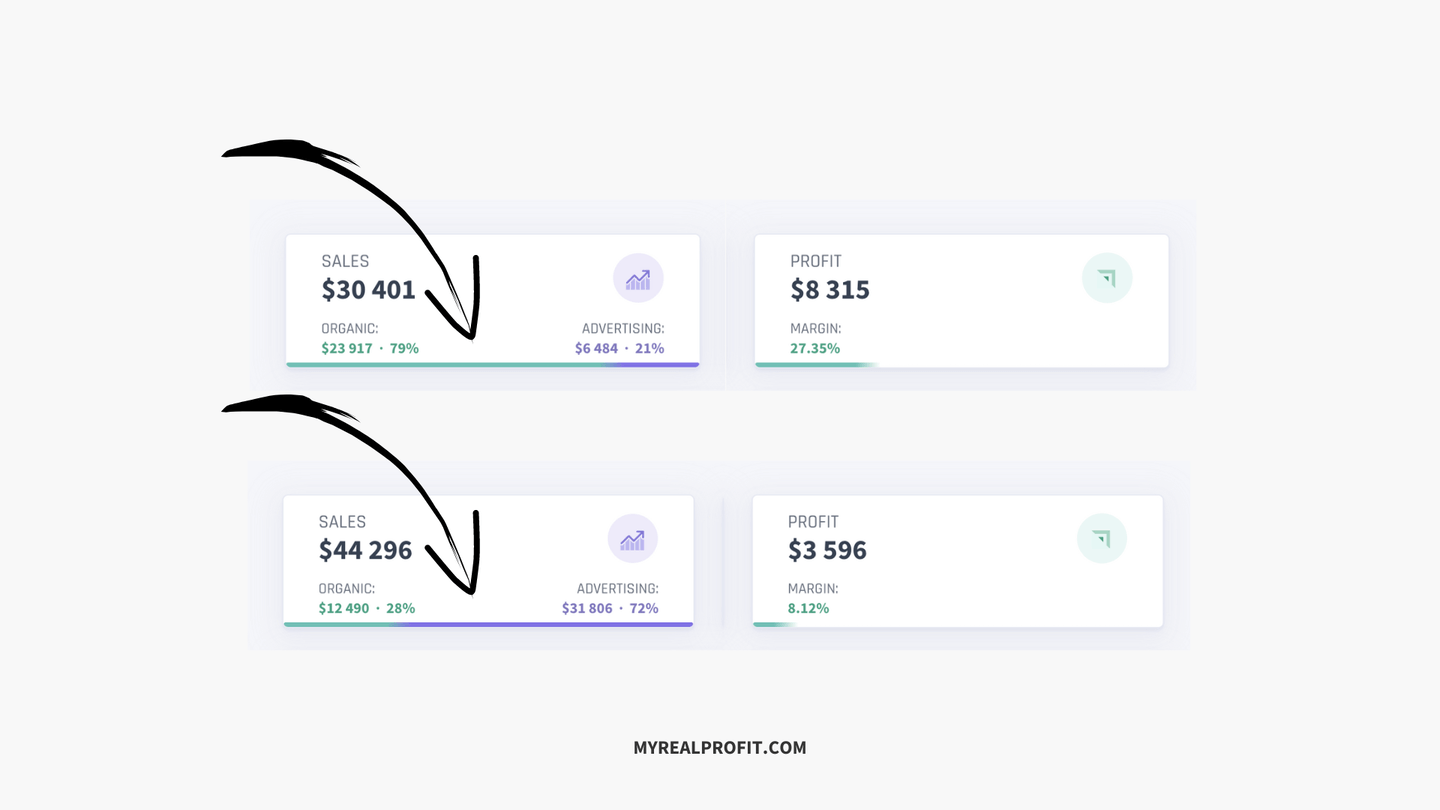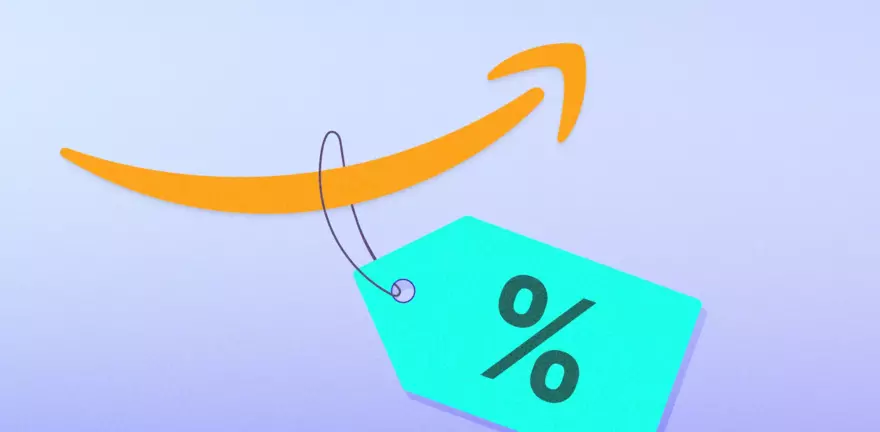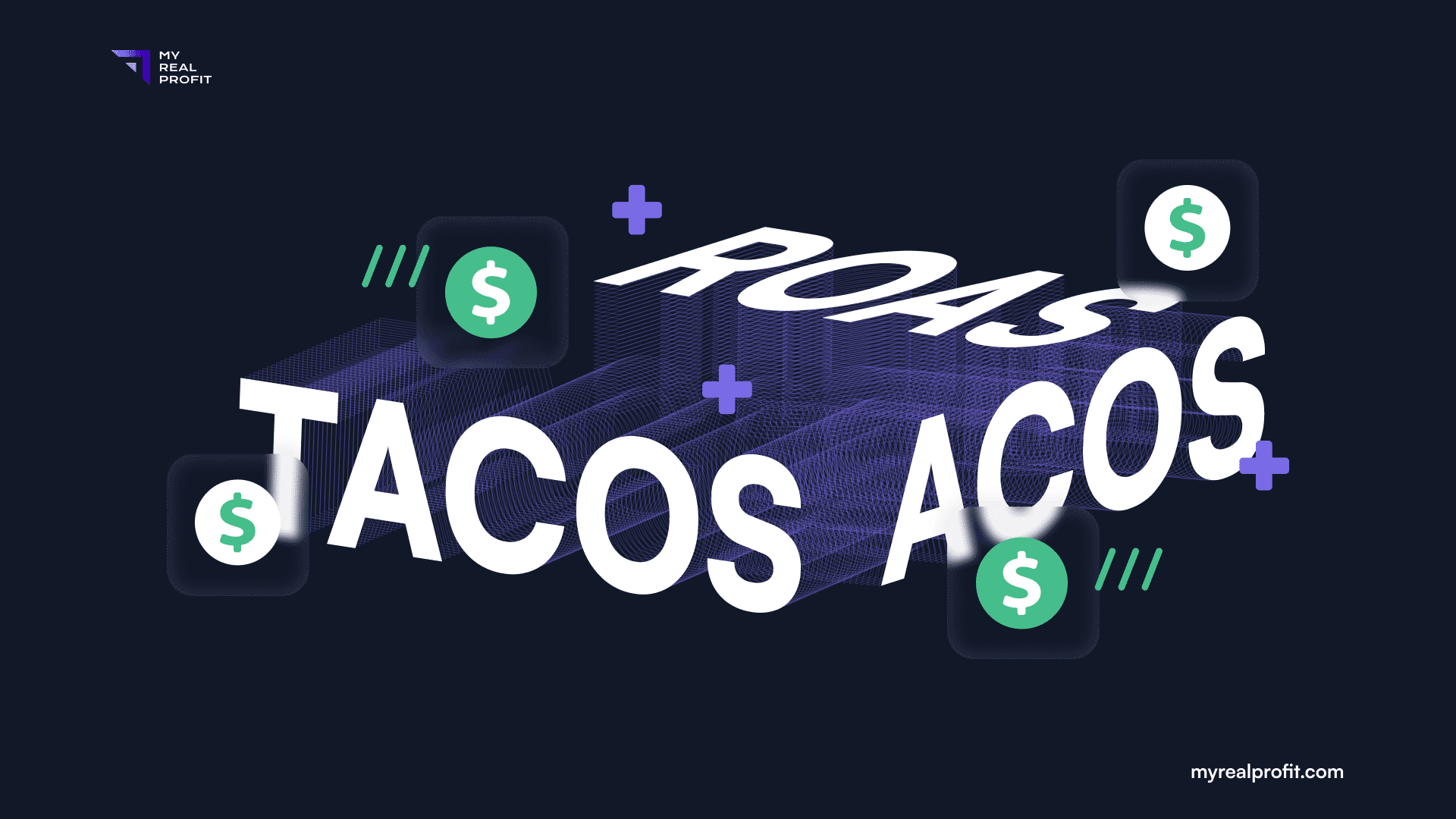Amazon is an incredibly successful marketplace with a powerful and loyal customer base of over 300 million active users. If you want to sell your products and make good money, you should use the vast reach of Amazon to get your products in front of potential customers through Amazon PPC.
But how do you know if your Amazon Sponsored Products campaigns are effective? To do this, you must calculate the Advertising Cost of Sales (ACoS) for each product to make sure that your ads are paying off and yielding benefits. Amazon ACoS measures the performance of ad campaigns and can indicate when you should reduce or increase your advertising costs depending on your target.
In this article, we will focus on the most important questions related to evaluating the success of ad campaigns on Amazon: What does ACoS mean? Why is this metric so essential for Amazon PPC ads? How can I calculate Amazon ACoS? How do I quickly reach my target ACoS on Amazon?
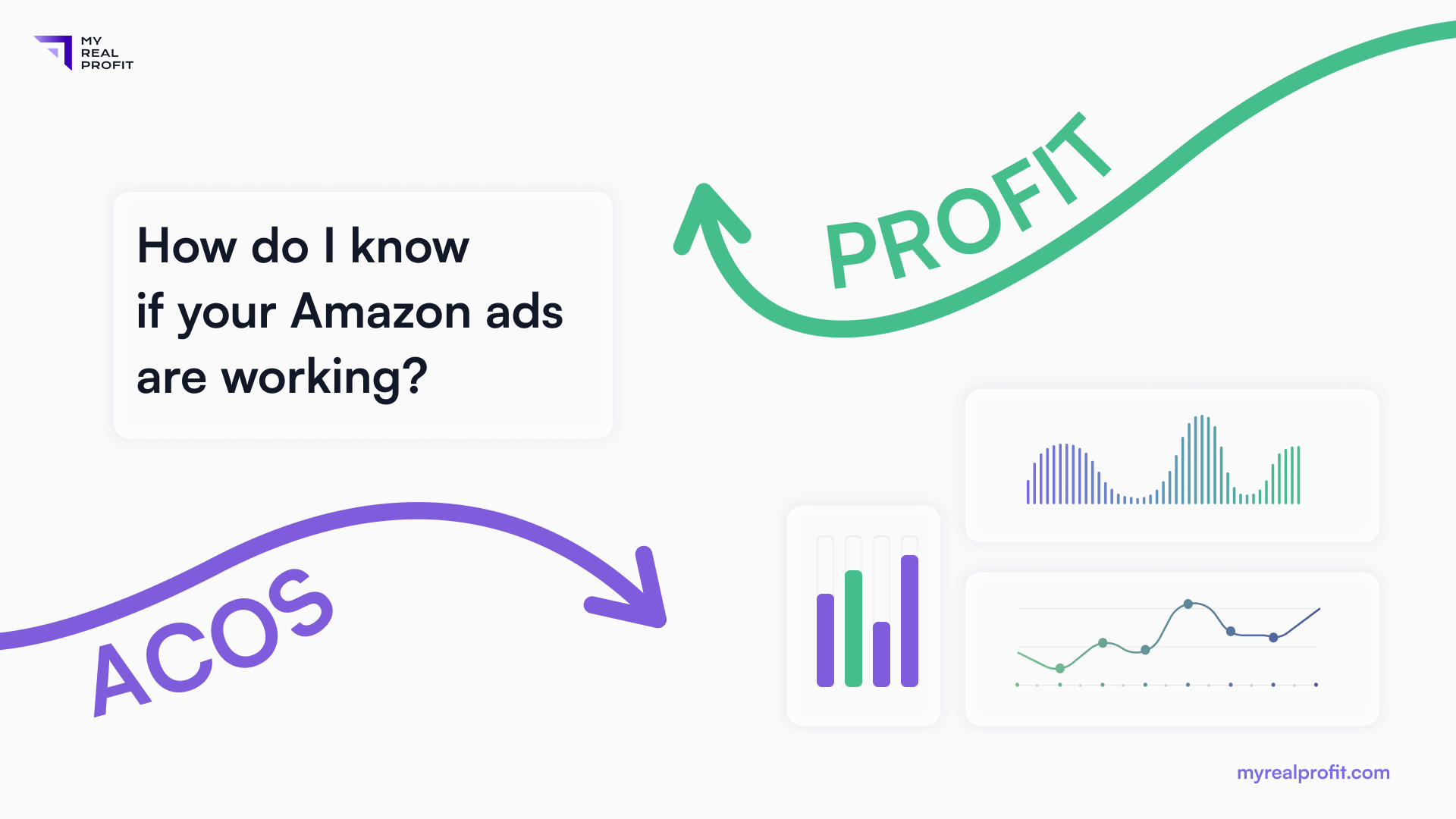

What exactly is Amazon ACoS?
ACoS stands for Advertising Cost of Sales and is used to measure the performance of sponsored product campaigns on Amazon. The ACoS definition is simple: for every dollar made from a sale, ACoS will tell you how much was spent on advertising (the cost of advertising that product). In other words, it is a percentage ratio of ad spend versus ad sales.
Amazon ACoS helps sellers better understand which products or ad campaigns drive the most sales and generate the highest return on investment (ROI). With this knowledge, you can optimize your advertising campaigns for maximum efficiency and profitability.
Amazon ACoS formula in action: How do I calculate ACoS?
Amazon ACoS measures the percentage of a seller’s advertising costs compared to the total revenue generated from those ads. You can calculate ACoS by following these steps:
Step 1: Calculate your total ad spend
Ad spends are the cost of acquiring users using paid advertising sources.
Step 2: Calculate your total ad revenue (advertising sales)
Advertising revenue is the monetary income that sellers receive for displaying paid advertisements on Amazon, their website, social media channels, or other ad placements.
Step 3: Divide your total ad spend by advertising sales and multiply the result by 100.
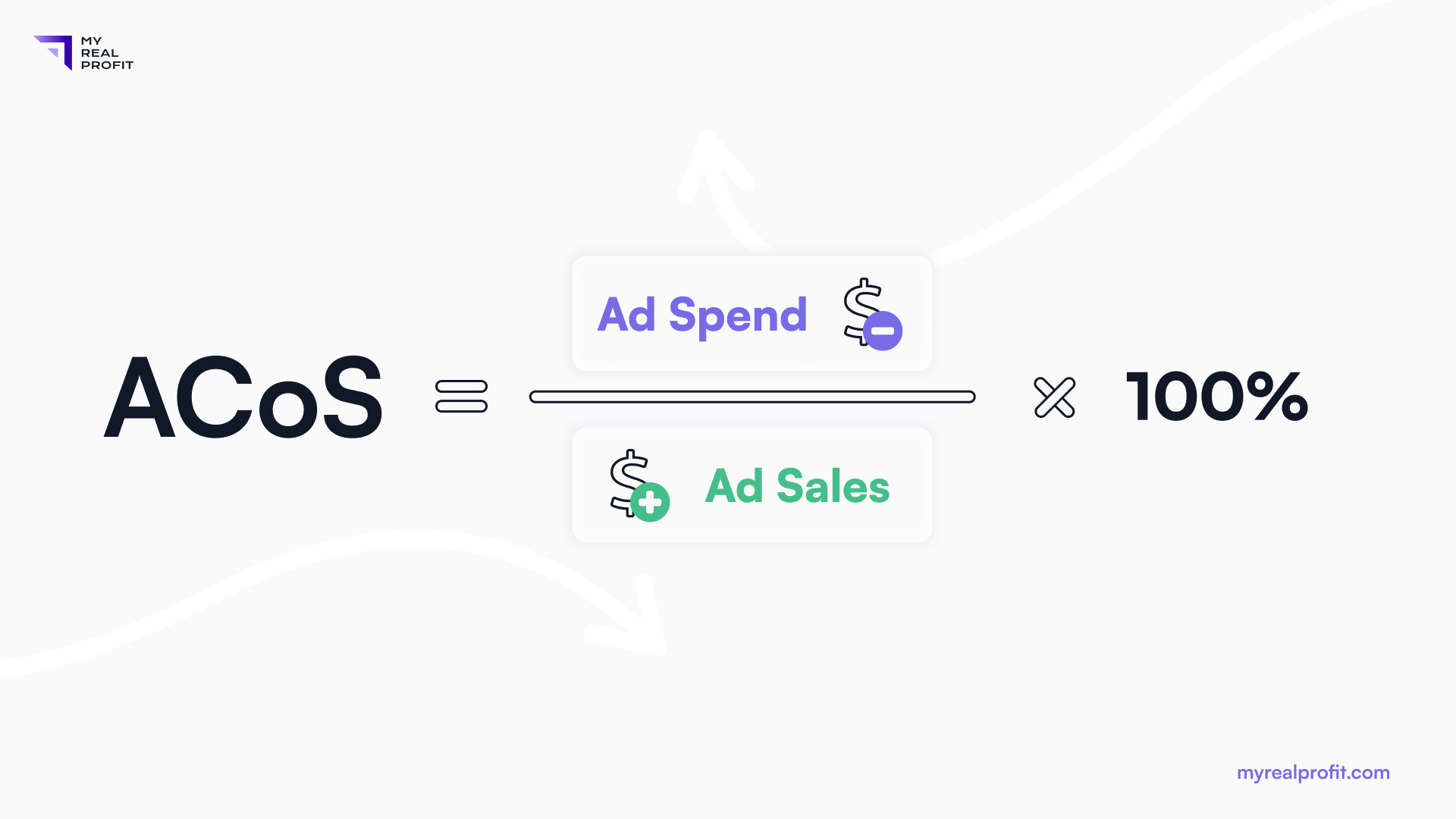

You can figure out the ACoS for your whole account, as well as for certain parts. For example, you can measure it at the campaign, ad group, product, or keyword levels.
At first, this formula may seem confusing. Let’s use an example to break down how to calculate ACoS.
Imagine that you spend $100 on the product ad campaign. This $100 makes sales of $500. So your ACoS would be 100 divided by 500 times 100. According to our ACoS calculation, your Amazon ACoS is 20%. This means you are spending $0.2 for every $1 you get.
What is a good ACoS for Amazon PPC?
Figuring out the best Amazon ACoS for your business can be difficult. There is no one correct answer – it depends on what you want to do and how you want to use Amazon advertising. If your goal is to make lots of sales, you will pick one number. But if making money is more important, that may mean using a different number. It all depends on what targets matter most for your success with Amazon advertising.
The average ACoS is usually about 30%. But it is better to lower ACoS to 20-25%. To make more money, you should not spend too much on ads or too little. You have to find a balance between the two.
When crafting your Amazon ACoS strategy, factor in the goals of your product selling plan to ensure that you get the optimal outcome.
If your goal is to achieve a high profit margin, you must have a low advertising cost of sale. When your ACoS is under 25%, it’s a sign that conversions are high for the keyword or product, meaning you should consider increasing your bids to get more clicks and overall traffic.
If you strive for high visibility, you must invest more money in PPC advertising, which leads to high ACoS and low profitability. When Amazon ACoS equals profit margin, meaning to break-even ACoS.
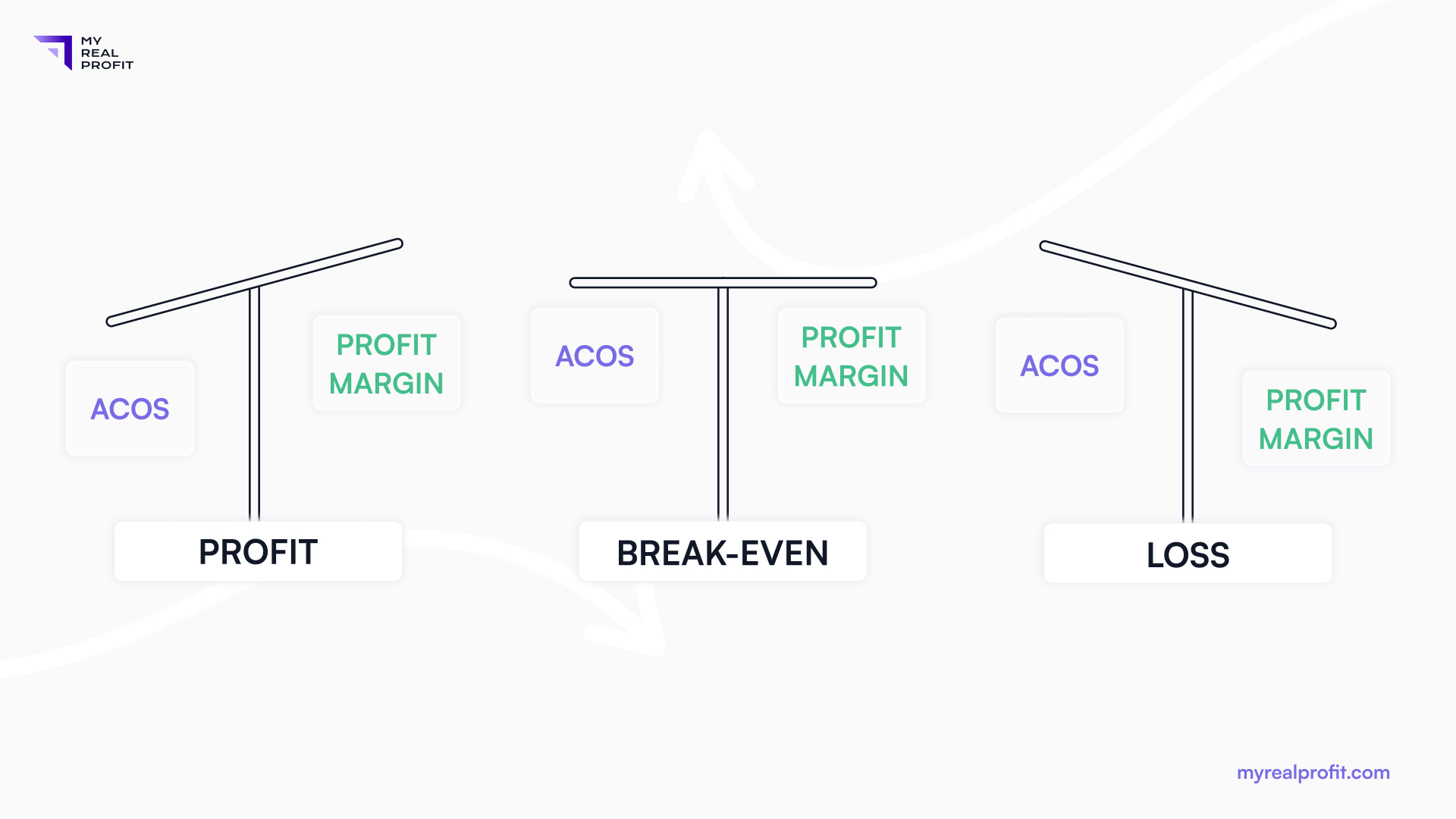

Why is the Break-Even point so important for your Amazon PPC campaign?
Break-even ACoS is the point where your advertising efforts are balanced with the revenue generated from those Ads.
When Amazon ACoS percentage equals break-even ACoS, advertising campaigns make neither profit nor lose money. This break-even point can be seen as a zero-profit situation when ad dollars spent generate the same amount of returns. By understanding the break-even point, sellers can make informed decisions about their advertising strategies and optimize their campaigns for better results.
My Real Profit offers analytics software for Amazon sellers, which monitors all your sales and costs to show break-even ACoS and other metrics for each product. With this Software, you can track all sales figures and all costs in one place in real time. You needed this to track the profitability of all sales and each product separately to evaluate your advertising efforts and react timely to changes in the key figures that affect your total income.
Join My Real Profit easily in less than 2 minutes. You need just a few clicks: register and connect your Amazon account.
How to calculate break-even Amazon Advertising Cost of Sales
In essence, your break-even ACoS equals your profit margin. Whatever your pre-ad profit margin is for a given product, that is the maximum amount that you can spend on ads and still turn a profit.
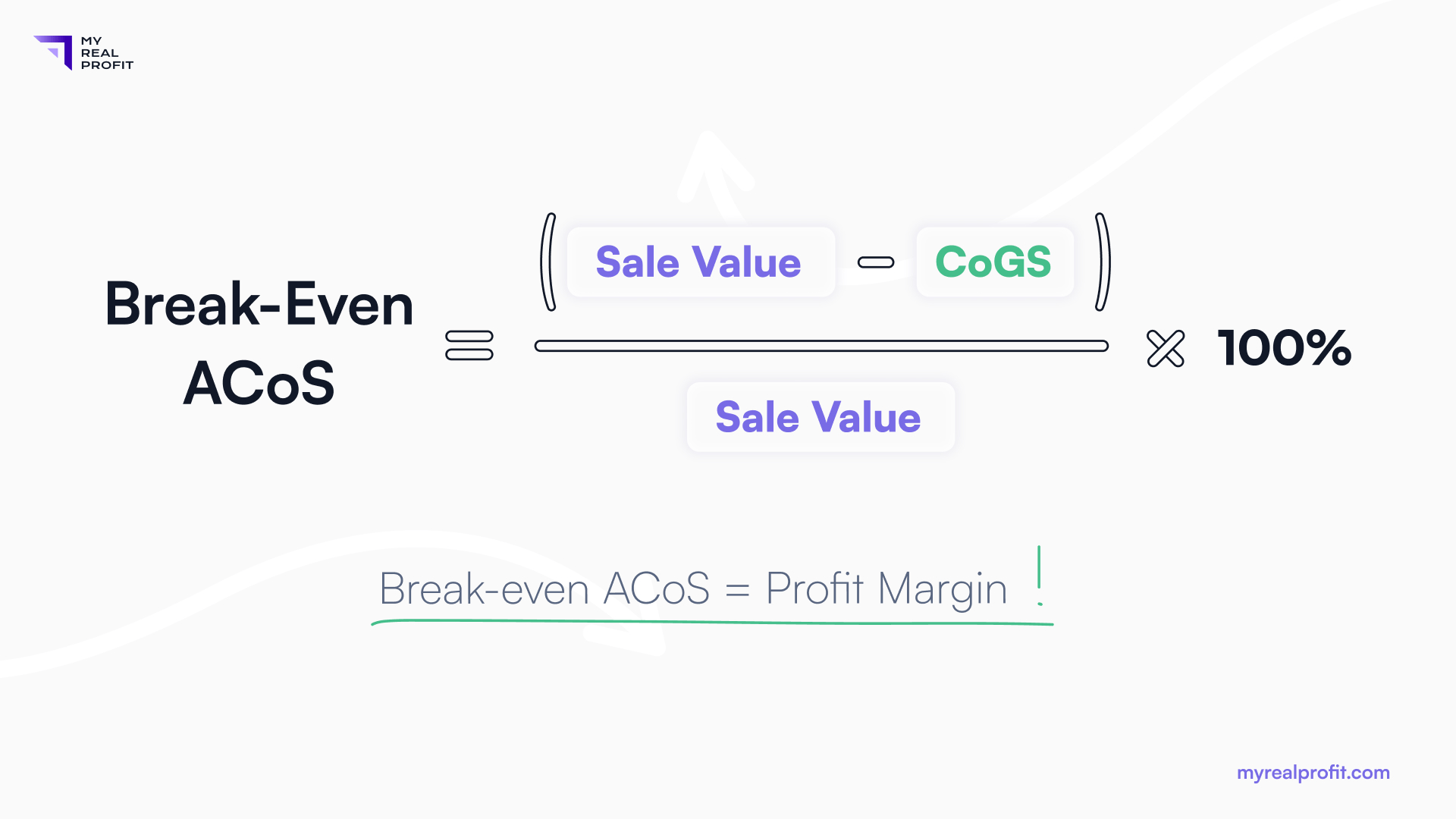

You can easily calculate break-even ACoS in just three steps.
Step 1. Know your profit margin
Your profit margin represents the amount left after you have paid for all spending, including the cost of goods sold, delivery costs, storage costs, Amazon fees, and other expenses. In other words, the cost of goods includes total expenses from manufacturing to Amazon costs.
To calculate the profit margin, you need some key metrics:
Revenue — the income you earn from selling your products.
Cost of goods sold (COGS) — the amount of money it takes to source your products.
Amazon fees – referral fee, FBA fee, storage costs
Refunds – the amount of money returned to your customers
Gross Profit — this is your revenue minus (COGS + Amazon fees + refunds)
You get your profit margin by dividing gross profit by revenue. If your ACoS exceeds your pre-advertising profit margin, you have passed your break-even point and will lose money from advertising.
Calculating your profit margin is an easy process, and here’s an easy example: if COGS+amazon fees+refunds is $50, but you have sold the products for $100 then the profit margin would be 50% ($50/$100*100).
So, if you want your Amazon advertising campaign to break even, your ACoS percentage cannot be more than 50%. The ideal profit margin is the decisive factor in determining whether the campaign will be lucrative or not.
Step 2. Calculate your ACoS
As we said above, Amazon ACoS is calculated by dividing ad spend by ad revenue and multiplying the result by 100.
To demonstrate the practical application of this information, consider the following example. If you spend $500 on an ad campaign and generate advertising revenue of $1,500, your ACoS will be 30%.
Step 3. Compare Amazon ACoS and profit margin
When you have both the profit margin and ACoS data, it quickly becomes evident where your break-even point lies.
For instance, if the profit margin is 50%, but your Amazon ACoS is 40%, advertising will be profitable for you since the latter number is lower than that of the former. However, should this situation occur in reverse (i.e., an ACoS greater than a profit margin), an Amazon ad campaign would constitute a loss for your business.
How to find your target Amazon ACoS?
Determining your target ACoS requires careful analysis and tests. Firstly, you must understand the target profit margin you are aiming for. This will affect the amount of money you allocate to advertising campaigns.
Secondly, it’s essential to identify which products PPC campaigns are most likely to generate sales and then calculate the ACoS required to achieve the desired ROI. Once you have an idea of how much you might be spending on each product or advertising campaign, set a target ACoS that reflects your goals.
You can use the simple formula below to calculate the target ACoS.
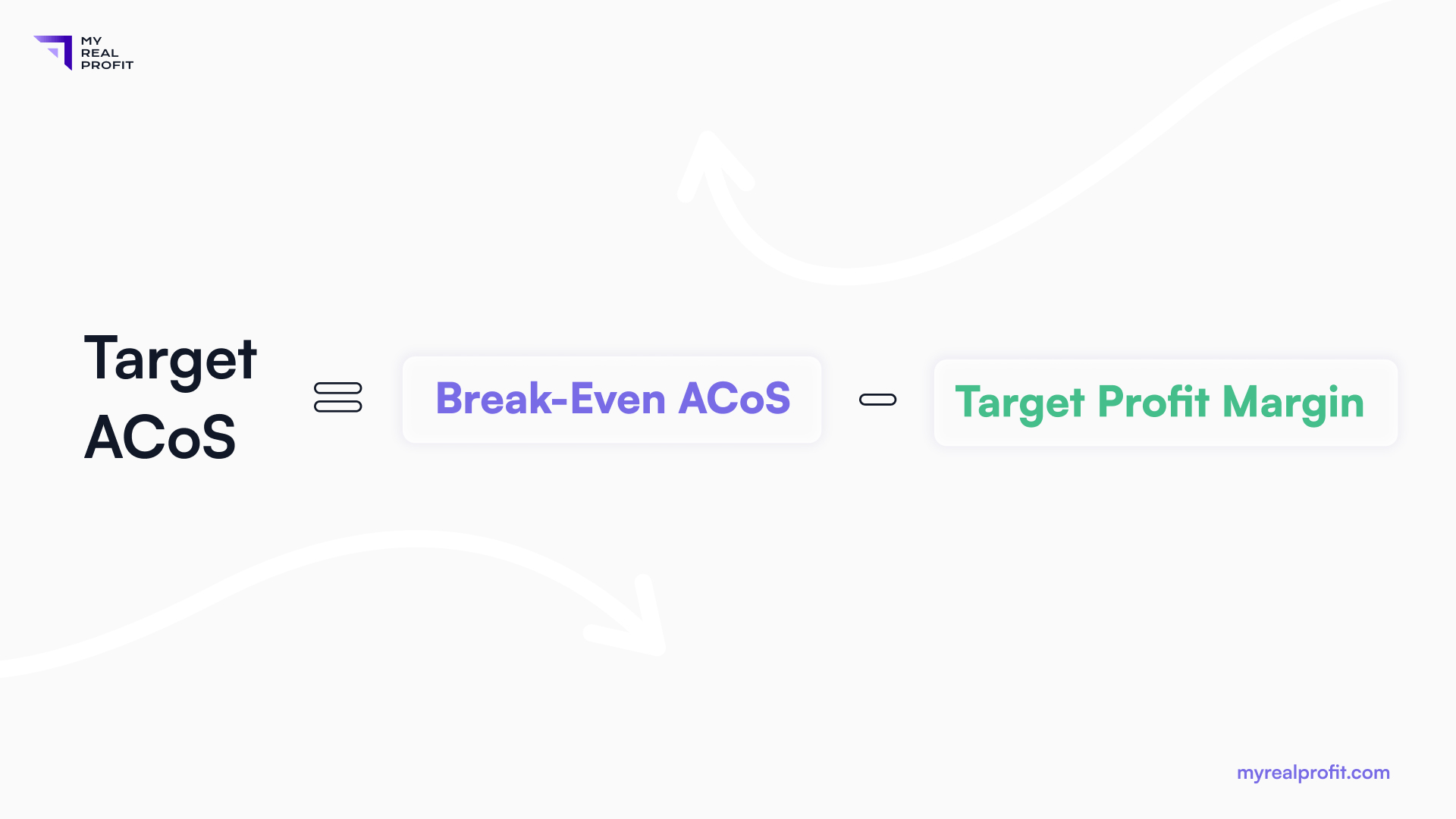

Experiment with different combinations of relevant keywords, bids, and budgets to reach this target – tracking results along the way – until the goal is achieved.
What is Return on Ad Spend?
If you’re looking to measure the success of your Amazon PPC campaigns, Return on Ad Spend (ROAS) is another great metric to look at. ROAS represents how much money you make for each dollar spent on advertising.
It’s calculated by dividing the total revenue generated from ads by the total ad expenditure. By tracking Amazon ROAS, you can get an idea of how effective and profitable your paid marketing efforts are.
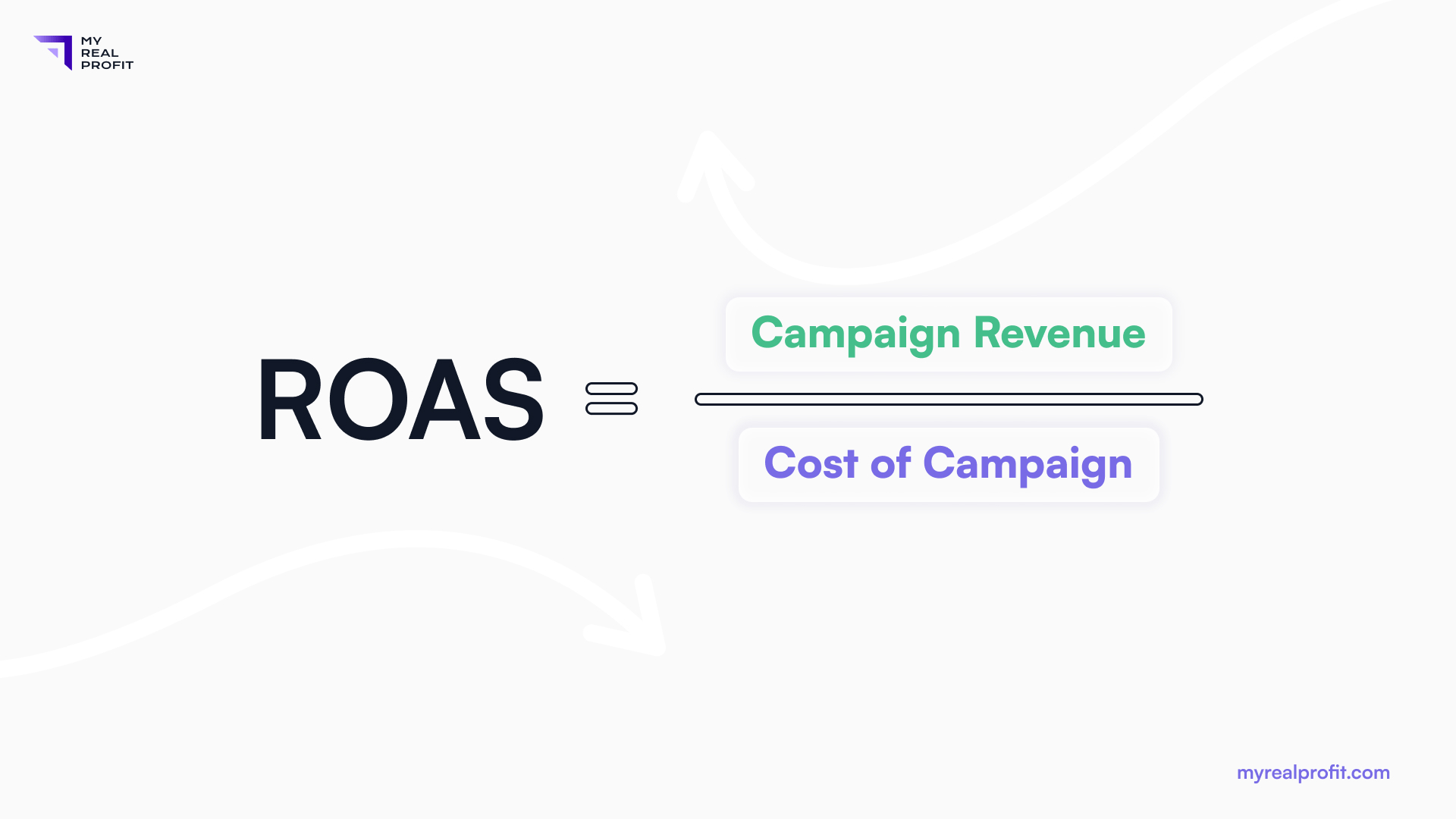

Although the way it’s calculated may be different, ROAS and ACoS are both used to evaluate if your Amazon ad campaigns are generating profits are not.
How to optimize your Amazon ACoS?
Amazon sellers can reduce their advertising costs to maximize profits and efficiency. One way they can do this is by decreasing their ACoS on Amazon. In some cases, when they want to rank a current or new product, running ads with high ACoS for a certain period may be satisfactory.
Here are the top ad optimization recommendations to help lower your advertising cost of sales quickly and effectively:
Enhance Your Product Pages for Maximum Results
Maximize the potential of your Amazon-sponsored product campaigns by tweaking your Conversion Rate (CVR) and Click-Through Rate (CTR).
Your product page is the cornerstone of all your advertising efforts, so it should be optimized for maximum results.
Start by assessing the content on each product page to ensure that all relevant information is included. This includes customer reviews, detailed descriptions, and high-quality photos from different angles. If you have any offers or discounts available, make sure they are clearly listed on each product page.
Pay attention to the pricing of your products, as this is a major driver of CVR and CTR.
Pinpoint the Most Beneficial Times for Amazon advertising
Analyze different time slots, days of the week, or seasonal trends. Depending on the items you offer and their categories, particular times of the year can cause ACoS to fluctuate. Generally speaking, the period between Black Friday and Christmas brings about remarkable transformation rates on Amazon, leading to significantly improved sales at an ACoS.
Maximize sales – Amazon Sellers Calendar 2023: Key Dates for Amazon FBA Sellers. Don’t let peak sales pass you by!
Maximize your potential with Amazon PPC Tools
Unlock the full power of the Analytics Tool by testing how search term optimization can enhance performance, decrease marketing expenses, help you reach objectives, and further your ambitions.
Also, use an Amazon keyword research tool to uncover the most searched and relevant keywords so that your ads are showing for searches related to your product.
No need to do everything manually. You can use modern software for Amazon sellers, which helps you save time and avoid losing important data and changes that affect your bottom line.
Make informed decisions, read Amazon Profit Analytics: How to Calculate Profit for Amazon Business
Monitor relevant keywords
For any successful Amazon venture, it is critical to conduct Amazon keyword research, acquire a thorough understanding of advertising cost of sale and adeptly bid on keywords. This not only increases the conversion rate but also helps reduce advertising spends.
You should test each keyword and ensure that bids are raised if you’re below your Amazon ACoS target and lowered when above. Likewise, eradicate any irrelevant keywords as negative words.
Don’t forget about the TACoS
TACoS stands for the Total Advertising Cost of Sales. It measures the relationship between ad spending and total sales. Unlike ACoS, TACoS takes into account total revenue – that is, both ad revenue and organic revenue.
When it comes to optimizing your Amazon PPC ads and growing your business, TACoS is an essential metric. If you find yourself in a situation where ACoS remains the same but TACoS decreases, rejoice! This means that despite a fixed advertising expenditure, more customers are being exposed to your product – thus giving rise to higher sales visibility on Amazon.
Using PPC campaigns not only boosts paid search sales but also improves organic sales in the long run. This decreases reliance on Amazon PPC ads!
How to Monitor the Amazon PPC Performance
Monitoring the Amazon PPC performance with an Amazon Seller Central account and a profit calculator is essential for ensuring your ad campaigns are successful.
Amazon Seller Central and Profit Calculator
The Amazon Seller Central dashboard allows you easily view your performance metrics, such as impressions, clicks, sales, conversion rate, and ACoS. Open the Campaign Manager tab in the main navigation of your Amazon Seller Central account to find PPC analytics data. You will see a list of your ad campaigns along with their respective performance metrics. Look for the Advertising Cost of Sales column to find Amazon advertising cost of sale for any given product or ad campaign.
Here you will find an overview of your campaign’s performance, displaying how much you have spent on Amazon advertising to generate each sale.
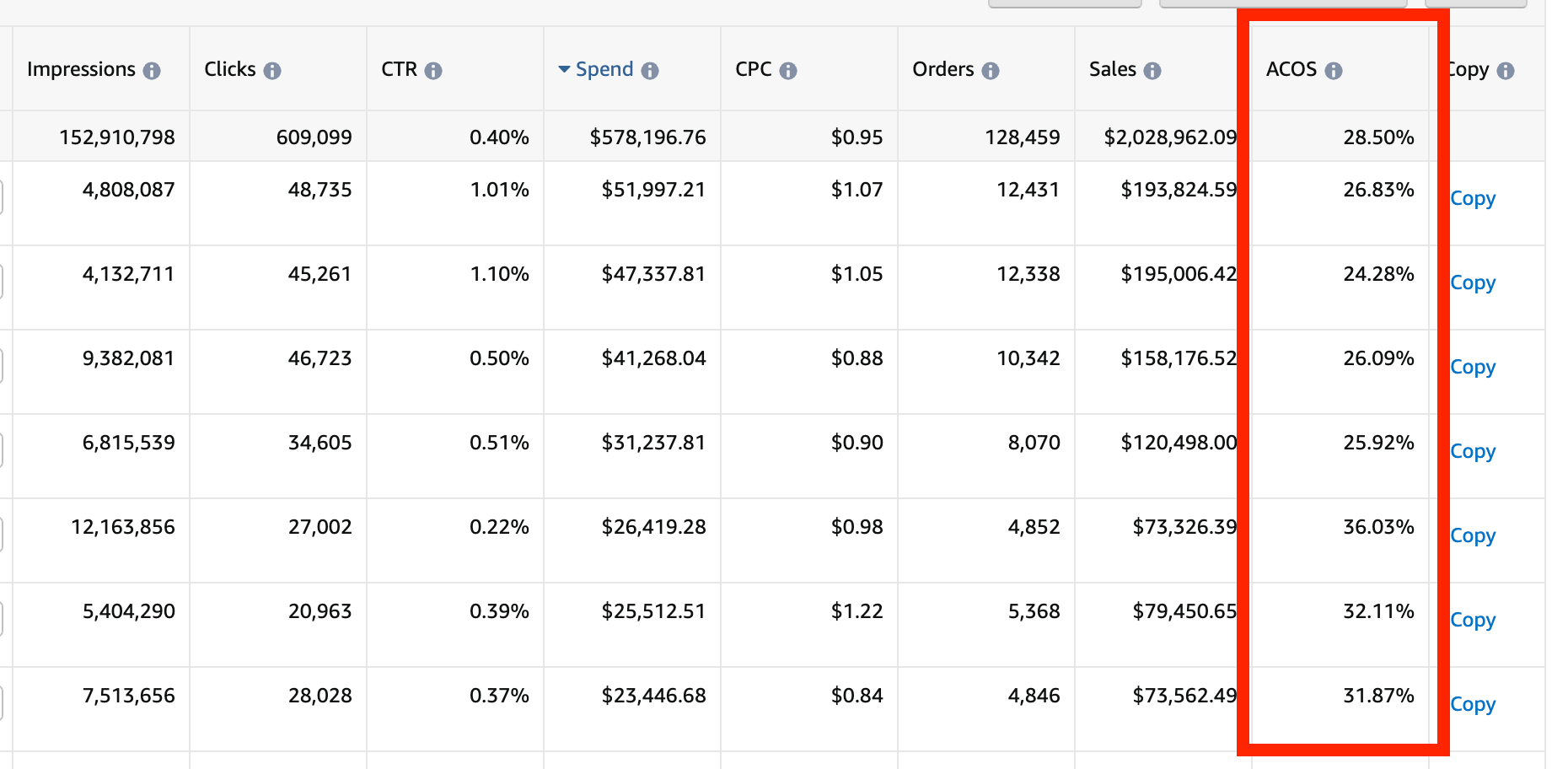

A Profit Calculator is another way to track the impact of PPC ads. This tool helps sellers assess their net profit margins by deducting their advertising expenses, referral fees, and FBA fees from their overall revenue. Furthermore, calculating the break-even ACoS is important for understanding the minimum amount of revenue needed to cover the cost of advertising.
The break-even Amazon ACoS indicates the maximum amount of ad spending an Amazon seller can afford while still maintaining a profitable business. A higher break-even ACoS means that the product requires a higher advertising budget, which could impact total profit. Moreover, the break-even ACoS is an effective tool for determining the zero profit point of the product. Once this point has been reached, any additional sales will generate profits for the seller. By calculating your Amazon ACoS, target ACoS, and break-even point, Amazon sellers can see how effectively they are utilizing their advertising budget and make informed decisions about their spending. Thus, to control expenses and maximize profits from Amazon ads, it is necessary to use different tools, like Amazon Campaign Manager, Profit calculator, or My Real Profit Software, to monitor your PPC campaign performance.
Final takeaways
Advertising cost of sale is the key metric for measuring advertising success on Amazon. It allows you to calculate the profitability of your campaigns and make adjustments as needed to optimize them.
Of course, the perfect picture of Amazon PPC advertising is low ACoS and high click-through rates and ad sales. In real life, good ACoS on Amazon depends on your marketing strategy.
The average ACoS of your advertising campaign or product can change at any time, depending on many factors, including COGS, product price, competition, Amazon fees, and the goals that you have set for yourself.
When you analyze ad campaigns, bear in mind that you need to consider not only ACoS but also other metrics. ROAS, TACoS, and CTR should also be taken into consideration for a well-rounded evaluation. Combining this data will give you a full picture of the effectiveness of your ad campaigns. Use these insights correctly to increase the success of your Amazon ad campaigns and maximize profit.

